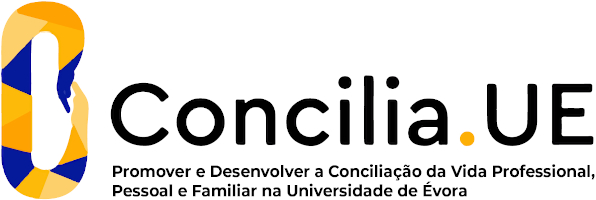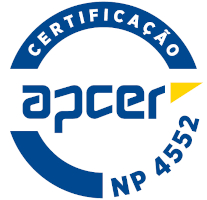2024
Vertebrates Biology
Name: Vertebrates Biology
Code: BIO12351L
6 ECTS
Duration: 15 weeks/156 hours
Scientific Area:
Biological Sciences
Teaching languages: Portuguese
Languages of tutoring support: Portuguese, English
Regime de Frequência: Presencial
Presentation
We unveil the secret of the evolutionary success of lampreys, sharks, fish, amphibians, reptiles, birds and mammals, and how land colonization and the conquest of the skies took place from the water.
Sustainable Development Goals
Learning Goals
To help students acquire the basic knowledge regarding the study of vertebrates, and understand the
anatomical and functional evolution resulting from the adaptation to new environmental conditions. To
assist students in vocabulary development, particularly in what concerns systematic and vertebrate
taxonomy. To develop the students skills to observe, identify and manipulate vertebrates in the field and in
the laboratory. To help the students in the selection and interpretation of scientific bibliography related
with the biology of vertebrates. Students will be encouraged to present the results of their work in the form
of reports (oral and printed) and interact with the other students in debates and on-line platforms used
regularly in the University
anatomical and functional evolution resulting from the adaptation to new environmental conditions. To
assist students in vocabulary development, particularly in what concerns systematic and vertebrate
taxonomy. To develop the students skills to observe, identify and manipulate vertebrates in the field and in
the laboratory. To help the students in the selection and interpretation of scientific bibliography related
with the biology of vertebrates. Students will be encouraged to present the results of their work in the form
of reports (oral and printed) and interact with the other students in debates and on-line platforms used
regularly in the University
Contents
1. General characteristics and classification of the vertebrates
2. Agnatha. Systematics; Biology of hagfish and lampreys.
3. Chondrichthyes: Systematics; Morphology of the Elasmobranchii and of the Holocephali.
4. Osteichthyes: Systematics and diversity; Morphology; Urogenital system and reproduction; Osmotic
regulation; Biology of the Coelacanthimorpha and Dipnotetrapodomorpha.
5. Amphibia: Sistematics and phylogeny. Skeleton. Integument. Ear and audition. Respiratory, digestive,
circulatory and urogenital systems. Reproduction.
6. Reptilia: Sistematics; Integument; Skeleton; Circulatory and respiratory systems; Sense organs;
Urogenital system and reproduction.
7. Aves Systematics; Morphology; Integument; Skeleton; Circulatory, respiratory, digestive and urogenital
systems; Reproduction;
8. Mammalia: Sistematics and phylogeny; Dentition; Horns and antlers;. Digestive and nervous systems.
Biology of the Monotremata;. Urogenital system and reproduction (Methateria and Eutheria).
2. Agnatha. Systematics; Biology of hagfish and lampreys.
3. Chondrichthyes: Systematics; Morphology of the Elasmobranchii and of the Holocephali.
4. Osteichthyes: Systematics and diversity; Morphology; Urogenital system and reproduction; Osmotic
regulation; Biology of the Coelacanthimorpha and Dipnotetrapodomorpha.
5. Amphibia: Sistematics and phylogeny. Skeleton. Integument. Ear and audition. Respiratory, digestive,
circulatory and urogenital systems. Reproduction.
6. Reptilia: Sistematics; Integument; Skeleton; Circulatory and respiratory systems; Sense organs;
Urogenital system and reproduction.
7. Aves Systematics; Morphology; Integument; Skeleton; Circulatory, respiratory, digestive and urogenital
systems; Reproduction;
8. Mammalia: Sistematics and phylogeny; Dentition; Horns and antlers;. Digestive and nervous systems.
Biology of the Monotremata;. Urogenital system and reproduction (Methateria and Eutheria).
Teaching Methods
Theoretical lectures that students should attend.
Practical sessions where students are encouraged to use the theory concepts learned in the course, through the use of different experimental protocols to identify, observe and manipulate vertebrates fresh or preserved and models.
During the field visits the students will have the opportunity to observe vertebrates in natural habitats. Other study visits will be made to where vertebrates are displayed or exploited (i.e. museums, aquariums, fish auctions, fishing ports).
The practical component of this course can take advantage of the laboratorial infrastructures that are available at CIEMAR (Sines) and other campus of the University of Évora, namely the Polo da Mitra.
Theoretical Module: monograph (50%);
Practical Module: Report (50%).
Practical sessions where students are encouraged to use the theory concepts learned in the course, through the use of different experimental protocols to identify, observe and manipulate vertebrates fresh or preserved and models.
During the field visits the students will have the opportunity to observe vertebrates in natural habitats. Other study visits will be made to where vertebrates are displayed or exploited (i.e. museums, aquariums, fish auctions, fishing ports).
The practical component of this course can take advantage of the laboratorial infrastructures that are available at CIEMAR (Sines) and other campus of the University of Évora, namely the Polo da Mitra.
Theoretical Module: monograph (50%);
Practical Module: Report (50%).





















